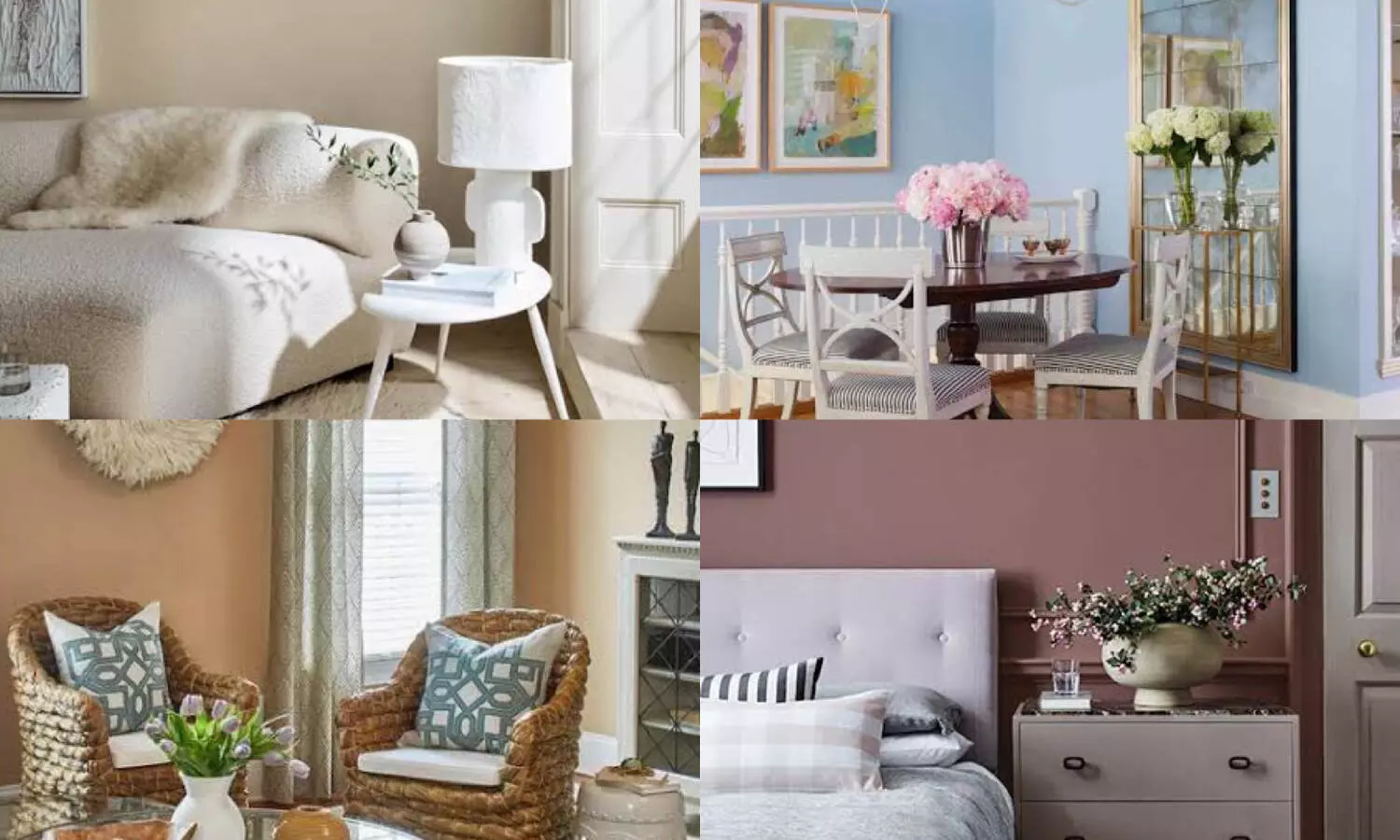The illusion of openness: How shades on walls create a feel-good factor in your sweet homes
Knowing which shades to avoid can help homeowners make smarter design choices and create the illusion of openness.
By Newsmeter Network
The illusion of openness: How shades on walls create a feel-good factor in your sweet homes
Hyderabad: When it comes to designing small homes, colours play a role as important as furniture or layout. The shades on the walls don’t just add style; they directly influence how spacious, or cramped, a room feels.
Interior designers point out that while certain colours may look appealing in magazines or larger houses, they can work against compact spaces by absorbing light or overwhelming the eye.
Knowing which shades to avoid can help homeowners make smarter design choices and create the illusion of openness.
Dark and Heavy Shades
Deep hues such as navy, charcoal, or maroon can give walls a dramatic touch, but in smaller homes, they tend to swallow light. This makes spaces feel narrower and ceilings appear lower.
“Dark tones can work well in large, open spaces. But in smaller homes, they tend to reduce the perception of height and width,” explained Ritika Sharma, an interior designer based in Hyderabad, speaking to NewsMeter.
Bold Reds and Oranges
Red and orange are often associated with vibrancy and warmth. However, in compact areas, these colours can dominate the room and create a sense of visual congestion.
“Warm, saturated tones have a contracting effect. In a small space, they can feel overstimulating rather than vibrant,” said Arvind Nair, colour consultant.
Earthy Browns
Rich brown tones may seem inviting, but in limited spaces they can box in the walls, making a home feel more enclosed than cozy.
“Brown can be grounding, but too much of it in a small setting gives a box-like impression. If clients love the shade, I usually recommend using it sparingly in furniture or décor, not on large walls,” suggested Sharma.
Grey Tones Without Natural Light
Greys are popular in urban interiors, but in small homes that don’t receive adequate natural light, darker greys can feel dull and heavy.
“Grey can look sleek, but in dim spaces it can feel flat and lifeless. This works against the goal of making a compact home appear open,” noted Sharma.
Black as a Dominant Colour
Black can be elegant in moderation, yet when used across walls or ceilings in small homes, it reduces brightness and depth.
“Black absorbs maximum light. Unless it’s a deliberate accent in a well-lit area, it is best avoided in small homes,” observed Nair.
Choosing Better Alternatives
Designers suggest opting for lighter, reflective shades such as off-whites, soft pastels, muted neutrals, or even pale blues and greens to give the impression of openness.
“The goal is not to limit personality but to maximize space. Even with a smaller home, thoughtful colour selection can make interiors feel brighter and more breathable,” added Nair.
Colours That Work Best in Small Home
Experts highlight that small homes benefit from tones that reflect light and visually expand walls.
“Soft whites and creams are timeless choices that open up space and work as a neutral backdrop for any décor,” said Sharma.
Light pastels like mint green, powder blue, and blush pink are also recommended because they add a subtle character without overwhelming the eye.
“Pastels provide just enough colour to make a home feel lively while still maintaining a sense of airiness,” explained Nair.
For those who prefer warmer tones, shades like pale peach, beige, or light sand can bring warmth without making the space feel heavy.
“The idea is to keep the walls light and let furniture or artwork provide bolder accents. This way, you don’t compromise on personality while keeping the space open,” added Sharma.